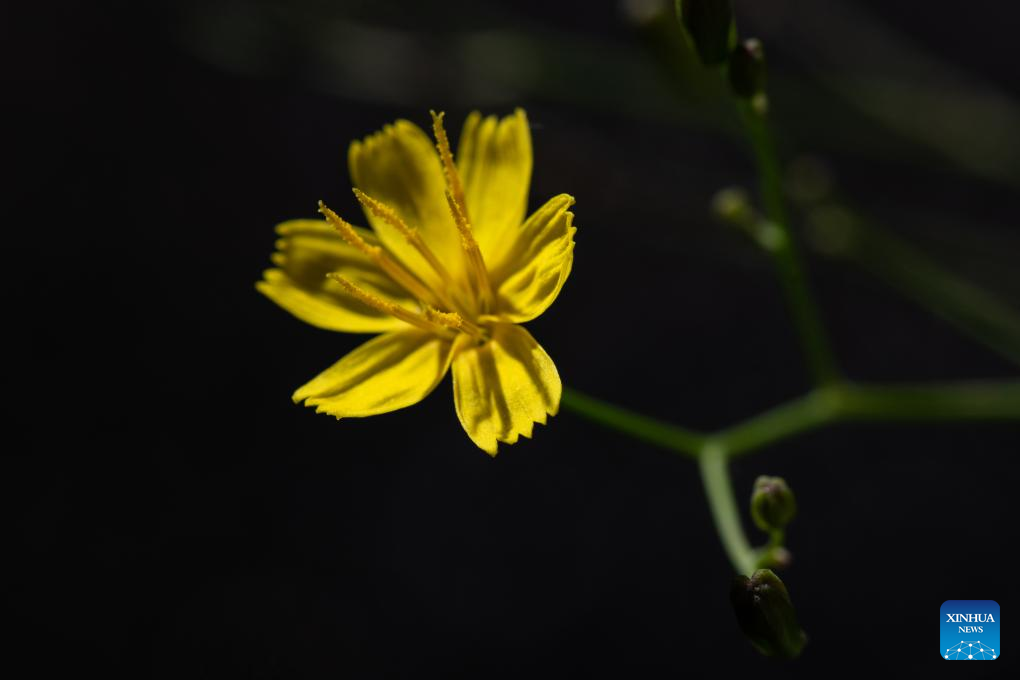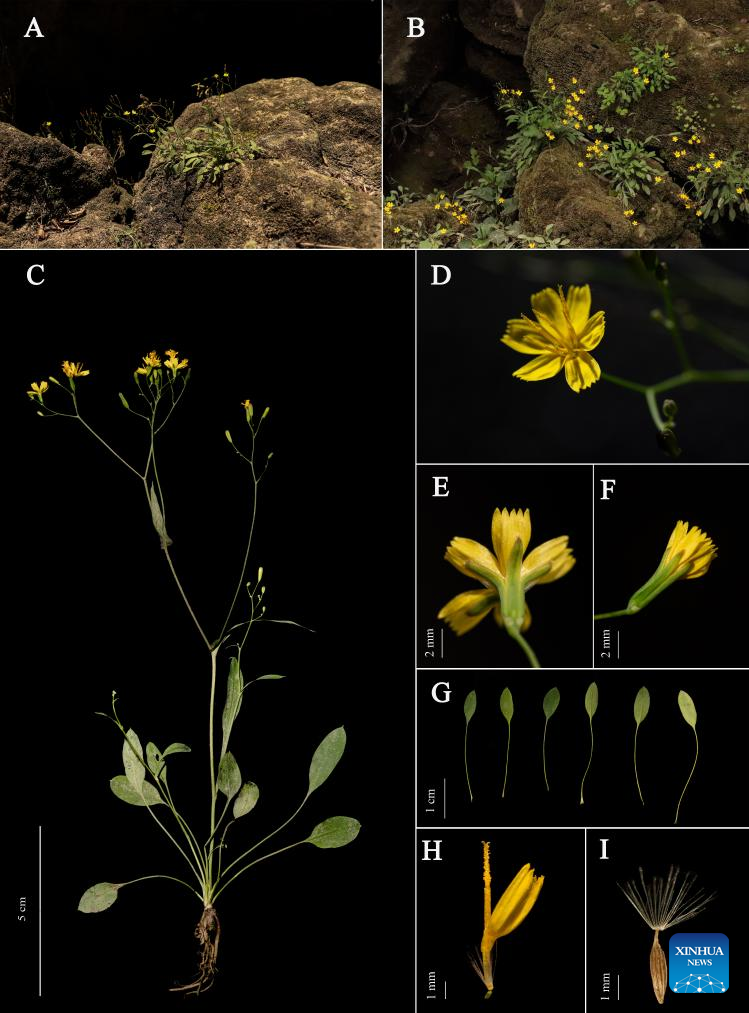
This file photo taken on March 27, 2023 shows an Ixeridium malingheense plant. Chinese researchers have discovered a new Asteraceae species, which has been named Ixeridium malingheense, in the Maling River Canyon of Xingyi Geopark in southwest China's Guizhou Province. The research findings were published in a recent edition of the international academic journal Phytotaxa. (Photo by Liu Feng/Xinhua)
GUIYANG, April 24 (Xinhua) -- Chinese researchers have discovered a new Asteraceae species, which has been named Ixeridium malingheense, in the Maling River Canyon of Xingyi Geopark in southwest China's Guizhou Province.
The research findings were published in a recent edition of the international academic journal Phytotaxa.
"During a field survey in the Maling River Canyon in March 2023, we first spotted this new species," said Li Zhi, a member of the research team who is from the college of forestry at Guizhou University.
The new species only grows on limestone near water in high-altitude mountains in the canyon. After a detailed morphological comparison, the researchers concluded that it represented a new taxon that has not been reported to the scientific community.
Featuring rugged terrain and steep valleys, the Maling River Canyon is rich in complex Karst landscape and flora. In recent years, several previously unknown species have been discovered in the area. ■

This undated combo picture shows Ixeridium malingheense and its living situation. Chinese researchers have discovered a new Asteraceae species, which has been named Ixeridium malingheense, in the Maling River Canyon of Xingyi Geopark in southwest China's Guizhou Province. The research findings were published in a recent edition of the international academic journal Phytotaxa. (Xinhua)

This photo taken on Feb. 17, 2024 shows the Maling River Canyon of Xingyi Geopark in southwest China's Guizhou Province. Chinese researchers have discovered a new Asteraceae species, which has been named Ixeridium malingheense, in the Maling River Canyon of Xingyi Geopark in southwest China's Guizhou Province. The research findings were published in a recent edition of the international academic journal Phytotaxa. (Photo by Wu Xu/Xinhua)



